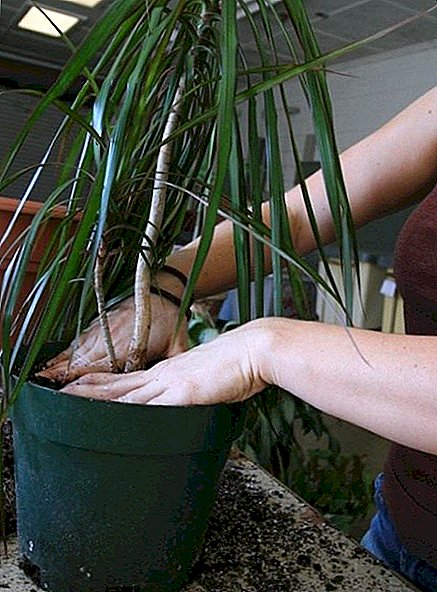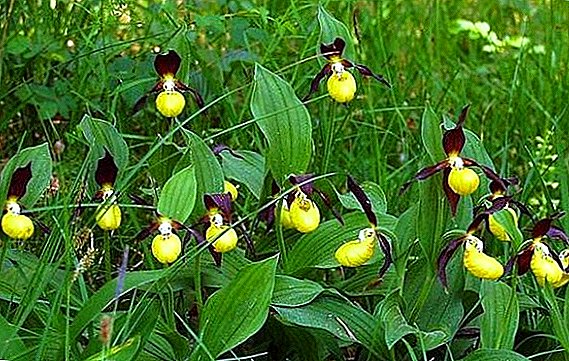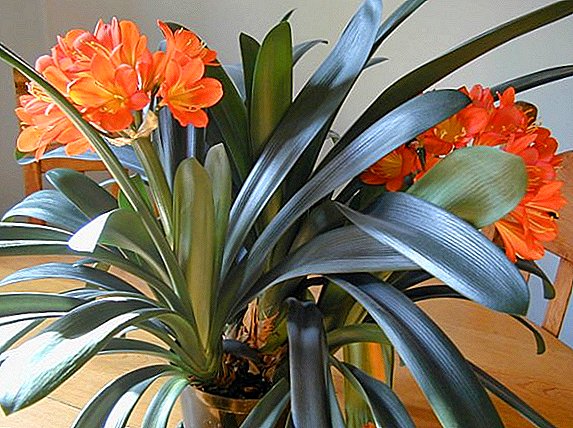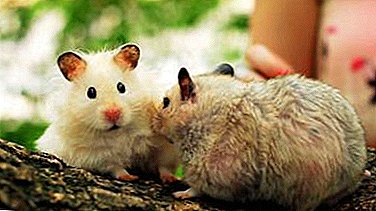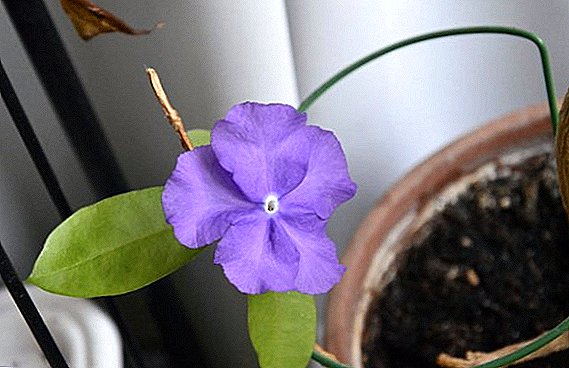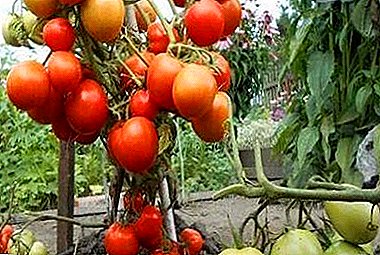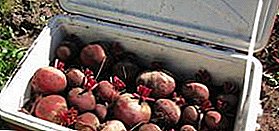 Clematis is an attractive climbing plant that can beautify any summer cottage, create a unique landscape design with its delicate flowers, and also turn a home greenhouse or balcony into a cozy corner.
Clematis is an attractive climbing plant that can beautify any summer cottage, create a unique landscape design with its delicate flowers, and also turn a home greenhouse or balcony into a cozy corner.
Botanical description
Clematis is also known as "clematis" or "lozinka" and is derived from lat. Clématis. This plant belongs to the family of Buttercups and is a perennial herbaceous or woody. A comfortable climate for living clematis will be subtropical and temperate.  Plants have lianoobraznye stalks, quite rare straight lines. Clematis leaves are opposite; they can be pinnate, whole, trifoliate, twice trifoliate. Clematis bloom in spring in large single flowers.
Plants have lianoobraznye stalks, quite rare straight lines. Clematis leaves are opposite; they can be pinnate, whole, trifoliate, twice trifoliate. Clematis bloom in spring in large single flowers.
Periands have 4 petaloid sepals, sometimes occur up to 8. The fruit of clematis has the appearance of a polygatta with pinnate hairs.
Familiarize yourself with the best clematis varieties, especially Ernest Markham and Wil de Lyon.
In Clematis Manchurian branched stems, which actively envelop protrusions and reliefs, so it is often used for decoration and gardening of vertical surfaces. The plant has a specific, sharp odor, which is well manifested when exposed to sunlight.
The leaves of this species consist of several, from 3 to 7, small leaves. He has small, collected in numerous inflorescences, white flowers with two pairs of oblong petals. During the flowering period, each shoot of a plant can have from 150 to 500 flowers.  On average, clematis grows to a height of 1.5 m, but can be as large as twice as large.
On average, clematis grows to a height of 1.5 m, but can be as large as twice as large.
Clematis Manchu unpretentious and well adapted to our conditions.
Spread
Manchurian clematis can be met most often in the northern hemisphere. It grows in forest areas, steppes and meadows, it can be found along the rivers and on their shores, on the slopes of hills, rocks and cliffs. Clematis loves moisture, light and warmth.
It can multiply in several ways:
- seeds;
- cuttings;
- division of the bush;
- layering.

Cultivate the plant began in the XVI century in Western Europe, although the Japanese began to do this even earlier. At the beginning of the 19th century, clematis became popular as a greenhouse plant.
Currently, there are a large variety of hybrid forms and types of clematis, some of them require special care.
Clematis is a Manchu cold-resistant, it normally survives the frosts of the middle lane, but likes to be in the sun.
Did you know? If clematis is properly covered and shielded from excessive moisture - it can transfer frosts to -40 °C.

Medical applications
Not all types of clematis are used exclusively for decorative purposes, some of them are also used in other areas, benefiting the person. So, for example, Manchurian clematis is effectively used in medicine.
For these purposes, mainly use the root system of the plant, but Eastern healers sometimes benefit from the grass. Clematis is a part of complex herbal therapy for both internal and external use.
Medicinal properties
The healing properties of Manchu clematis are widely used by Eastern medicine specialists. 
The main valuable qualities of the plant:
- used as an anti-inflammatory and antimicrobial agent, removes toxins;
- contributes to the normalization of blood vessels;
- It has anesthetic, anti-edema effect, is used in the treatment of the musculoskeletal system;
- due to the unique chemical composition can withstand some types of cancer. In complex therapy it is an additional remedy, increasing the effectiveness of chemotherapy;
- increases the secretion of bile, relaxes the muscles of the biliary tract, reduces inflammation and because of this it is used in the treatment of diseases of the liver, gall bladder, as well as acute hepatitis, fatty degeneration of the liver;
- used to treat psoriasis, chronic eczema, scabies;
Learn how crassula, kalanchoe, basil, pine resin, dodder, goldenrod, Tibetan lofant, heather are used to treat many skin diseases.
- has a positive effect on the work of the hormonal system of women;
- used in the treatment of diabetes, lowering blood glucose levels.

Tincture
The following recipes can be used to prepare the Manchu Clematis tincture.
Herb tincture
1 way: 20-30 g of dry grass pour 1 tbsp. boiling water, put the liquid in a thermos and let stand for half an hour. Drink 1/3 tbsp. three times a day.
2 way: 20-30 g of dry grass pour 60% alcohol and place in a dark place for 2 weeks. Periodically, the solution must be shaken, and at the end of the period, strain and take 20-30 drops three times a day half an hour before meals.
Root tincture
Place 1/3 of the shredded plant roots into a glass jar and pour 60% alcohol on the edges. Prepare the tincture for 2 weeks, periodically shaking and stirring the contents. Take 10-20 drops three times a day. Effectively as an aid in oncology. 
Growing at home
Manchurian clematis can be grown independently. Its advantages are effectively used in the landscape design of suburban areas, as well as to decorate the facades of buildings and architectural structures. Let's look at the features of breeding and growing this plant.
Learn more about the cultivation, care and reproduction of clematis.
Breeding
This plant can be propagated in several ways:
- Seeds. For their sowing it is best to use wooden boxes or special containers. When buying seeds, it is better to opt for copies of the current year; they will most likely give more seedlings.

- Cuttings. A simple way that will suit even novice gardeners. Cuttings are easily planted and rooted. The cutting is carried out in the spring during the period of intensive growth of clematis.

- The division of the bush. It is used for older plants, from the age of 5 years that require rejuvenation. There is a division in the autumn period and involves the complete extraction of the bush with the root system, dividing it into parts and landing on the former place of growth.

- Layering. It assumes the bending of individual layers to the ground to the holes dug near the bush and sprinkling them with earth. After a certain period of time, the shoots take root and can already be separated from the mother bush and planted in another place.

Landing features
When preparing seeds for planting, they can be soaked for several days in water, but not more than a week. For germination, you must create a suitable climate and temperature regime, which should not be below + 25-28 ° C.
After the appearance of the first leaves, the boxes with the sprouts should be moved to a well-lit place, but remember that the direct rays of the sun can damage the growth of clematis.
Learn about the rules of planting clematis in the fall, about the causes and ways to eliminate poor growth of clematis, how to properly feed clematis, what should be the support for clematis.
When transplanting seedlings into the open ground in spring, it is recommended to maintain a distance between seedlings of at least 20 cm. After 2-3 years after the first flowering, the plant can be planted in a permanent place.
When grafting, planting material must be harvested in the spring, when the buds begin to appear on clematis, this will help to take root in the plant. Procurement of cuttings should be made in accordance with certain standards, which will be the key to healthy growth of clematis.  Each of them should have 1-2 knots and a straight cut 1.5-3 cm above the knot, and the lower slice is made at an angle with a distance of 5-10 cm to the knot.
Each of them should have 1-2 knots and a straight cut 1.5-3 cm above the knot, and the lower slice is made at an angle with a distance of 5-10 cm to the knot.
The division of the bush is best done in the fall, and after the procedure, the newly formed plants are planted in the usual ground for them at the same place.
This plant loves sunshine or partial shade. When planting along the walls of the house, the following recommendations should be taken into account: do not do this on the north side and do not plant clematis too close to the house in order to allow the root system to develop normally.
The plant does not like drafts and windy suburban areas.
Important! When planting clematis do not forget about the supports, which should be installed immediately. The optimum height of the supports is 1.5-3 meters.
Clematis planting in the fall: video
Soil and fertilizer
When planting Clematis seeds Manchu should create or purchase a mixture of soil, which will include sand, peat, garden soil. All these elements must be present in equal proportions. After planting seeds, the surface of the soil is sprinkled with a thin layer of sand.
For the best rooting of the cuttings, the soil should contain many trace elements that will provide the necessary support to the plant.
Did you know? Clematis can grow in one place for more than 20 years.
Watering and moisture
The soil for Clematis Manchu must be constantly wet, for which should monitor its watering. When planting seeds, the best way to supply moisture will be the method of pallet irrigation, which will help prevent seed leaching.  Watering should be moderate, there should not be excessive moisture in the soil. It is enough to water the plant several times a week, around it, avoiding getting into the center of the plant.
Watering should be moderate, there should not be excessive moisture in the soil. It is enough to water the plant several times a week, around it, avoiding getting into the center of the plant.
Loosening and mulching
The process of mulching is a kind of charm and protection of the plant from overheating and sunlight. For these purposes, you can use peat, sawdust, tree bark, humus. Loosening is recommended after each watering, several times a week.
Preparing for the winter
When planting seeds in winter, they should be warmed in order to transplant them in the spring to grow. Clematis Manchurian differs from other types of Clematis by its good frost tolerance.
Important! In order for clematis not to suffer from excess water during a thaw, it is necessary to create a mound at an angle to protect its root system. For this you can use humus or earth.
 Clematis should be covered when the temperature drops below +5 ° C and the soil begins to freeze well.
Clematis should be covered when the temperature drops below +5 ° C and the soil begins to freeze well.Pests and diseases
Clematis Manchu can suffer from pests and diseases that must be promptly removed for healthy growth and a beautiful appearance of the plant.
Diseases found in this plant species:
- gray rot - manifested in the form of brown plaque on the leaves of the plant, which must be cut off. The same applies to shoots, if they are damaged by the disease. Then the whole plant must be treated with a base solution. As a preventive measure, watering with this substance can be done twice a year;

- powdery mildew - white spots on the leaves and shoots. To combat it, it is recommended to treat the plant with a solution of topaz or foundationol;

- rust - orange swelling on the clematis shoots. To remove it, apply the solution Bordeaux fluid.

The plant can also be threatened by such pests as:
- snails, slugs. They can be assembled by hand, and cabbage leaves laid out near clematis can be used for bait;
- spider mite Manifested in the form of crumbling buds and yellowed leaves. To remove the pest apply a solution of acaricides, which process the plant.
Dilution of Manchu clematis at home does not require much effort and financial investment. With proper care, this beautiful plant will delight you for years. Do not forget about the benefits of plants, whose medicinal properties can provide invaluable assistance in the treatment and prevention of many diseases.
Feedback from network users



